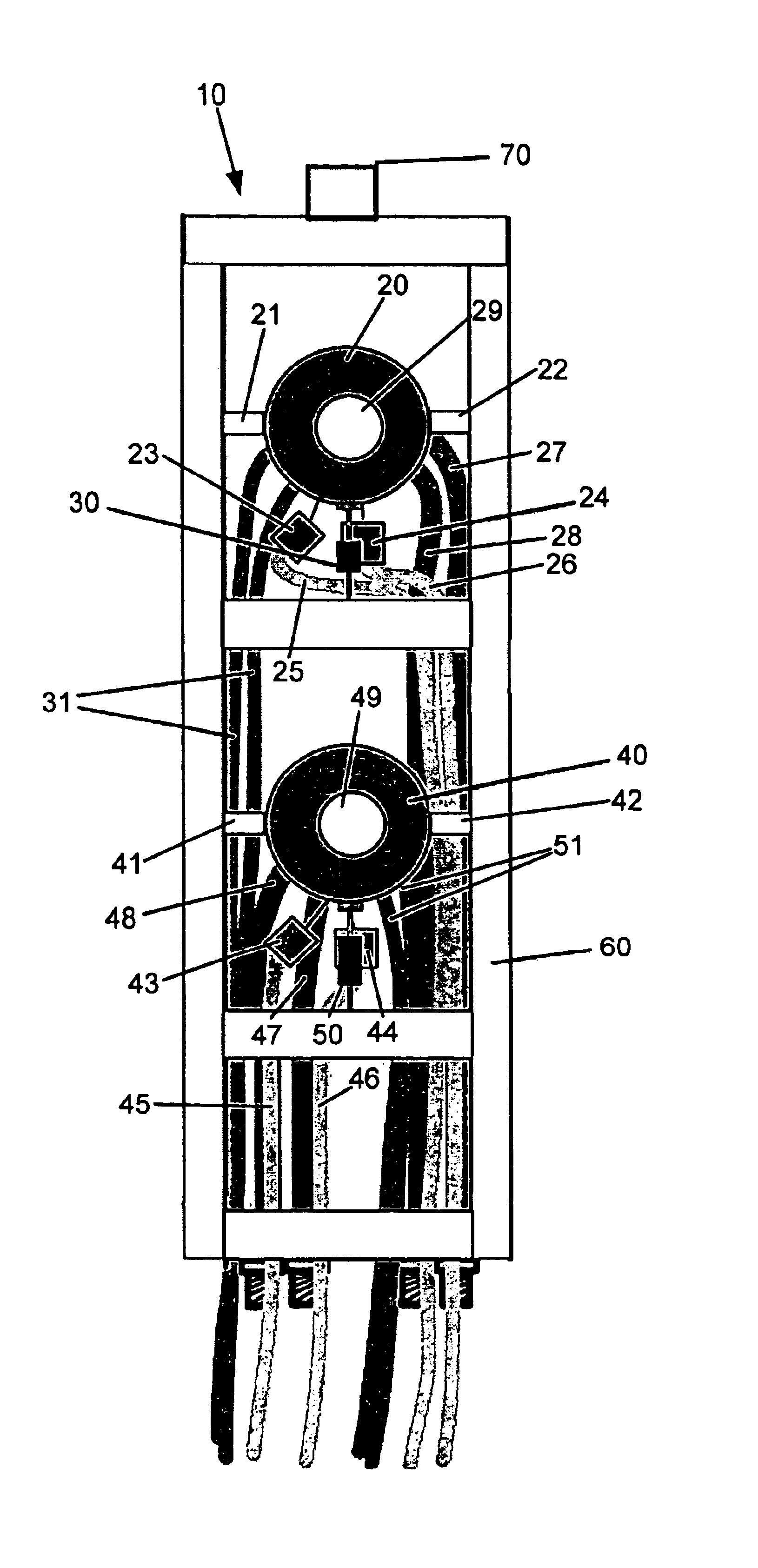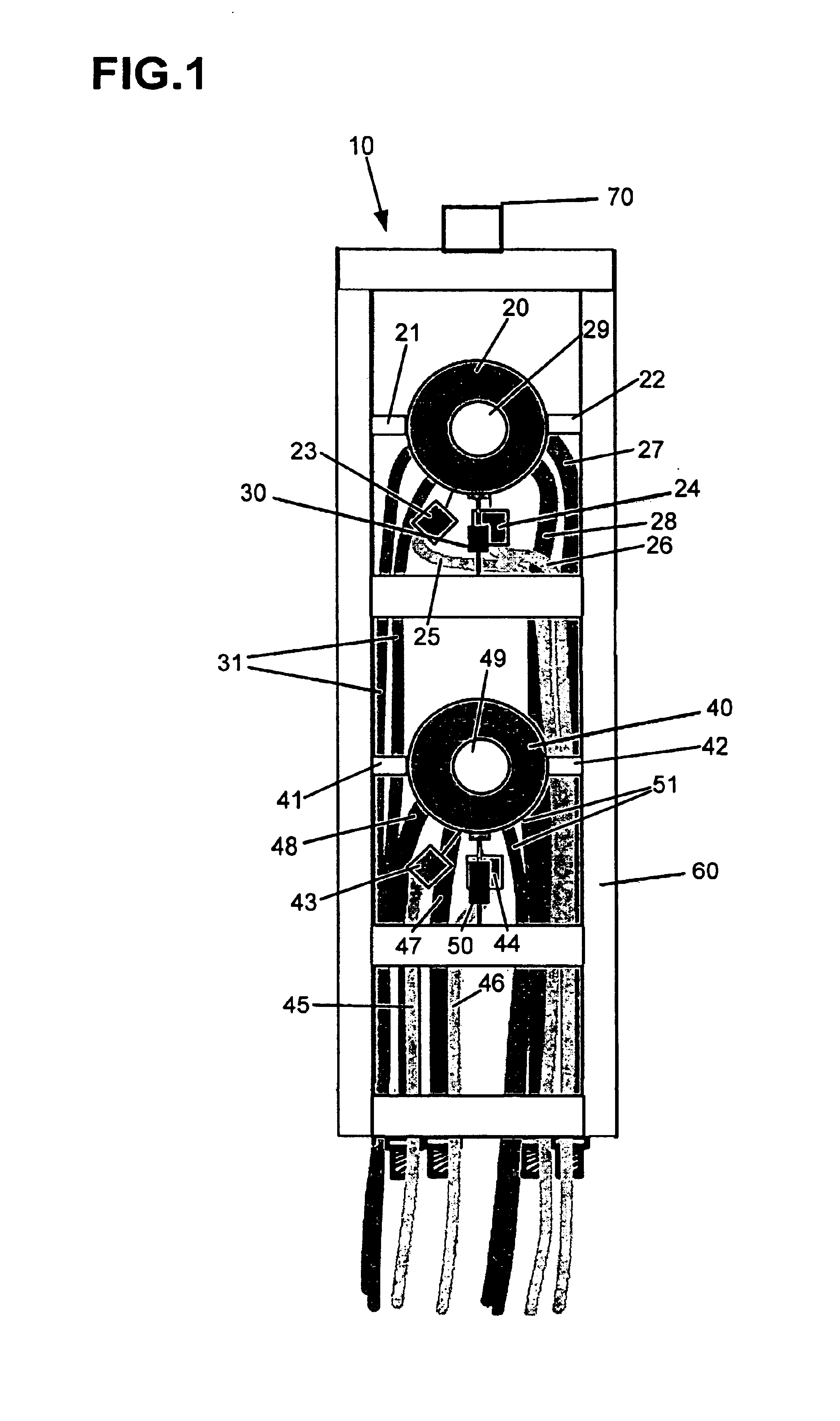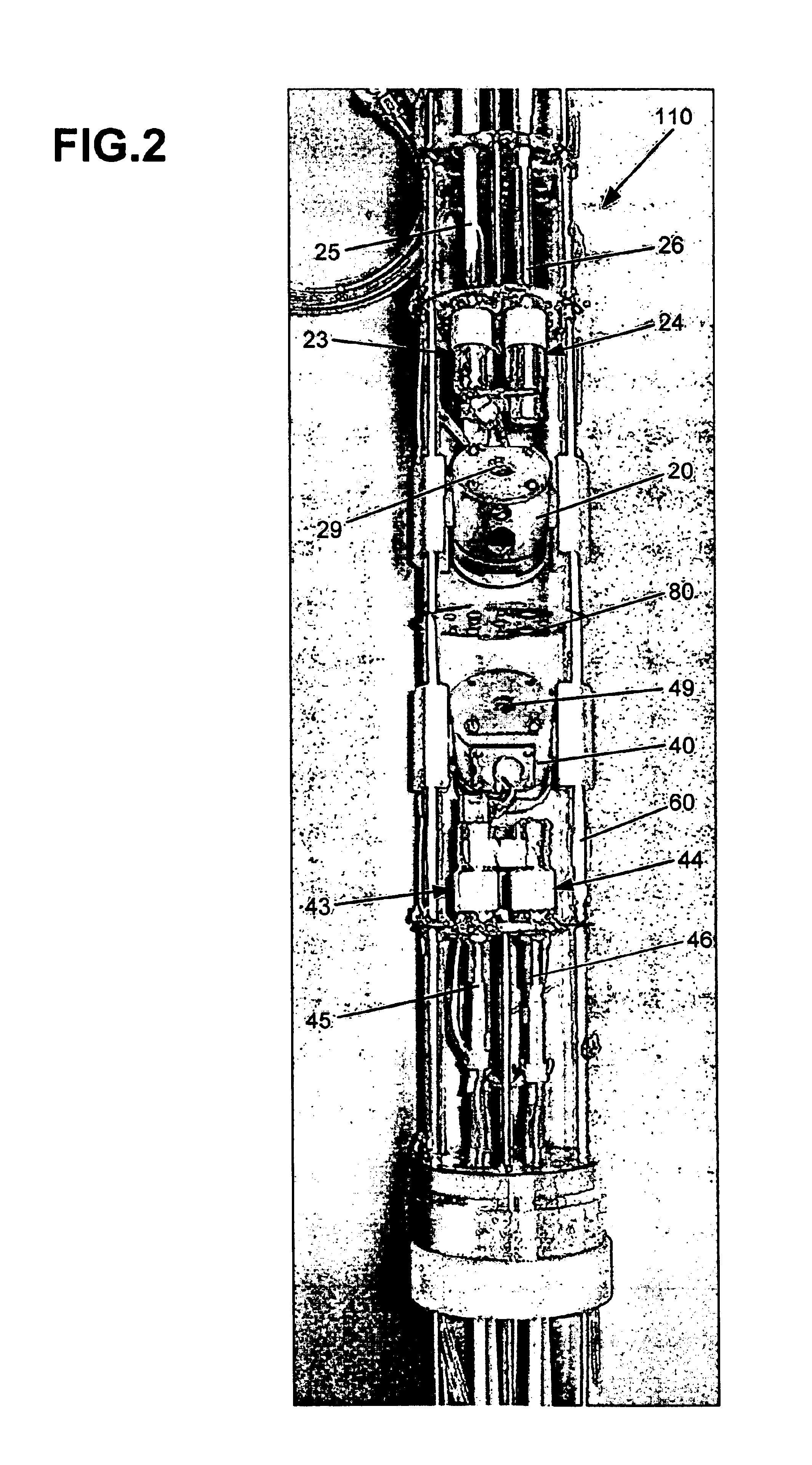New
drug compounds often are poorly crystalline or even amorphous, have long relaxation times, and are present at low levels in a formulation.
This creates a significant problem for analyzing these compounds using solid-state NMR
spectroscopy, because analysis times can range from a few minutes to a few days depending upon the state of the sample (i.e.
bulk drug or formulated product), relative sensitivity (i.e. choice and number of different nuclei in molecule), and relaxation parameters.
Also, throughput has been a significant problem in NMR spectroscopy, because the design of the
NMR magnet generally allows the analysis of only one sample at a time.
Autosamplers have increased throughput by minimizing the time spent changing samples and by allowing
continuous use of the
spectrometer, but have not increased the number of samples that could be run if samples were changed promptly.
This design does not allow for the easy incorporation of magic-angle
spinning (MAS) for multiple samples at typical (0.5 cm2) solid sample sizes.
Poor
signal to
noise ratio (SNR) is also a significant problem in the analysis of materials using solid-state NMR spectroscopy.
Increasing the SNR by
signal averaging is a problem if the sample has long spin-lattice relaxation times (T1) of minutes, hours, or even days, because the number of transients acquired is limited to one or at most several dozen.
It should be noted that some of these compounds may have been chosen because they have relatively short relaxation times, and that the recycle delays may not have been optimized.
First, resolution often will not increase dramatically at higher fields if the linewidth of the sample is limited by bulk
magnetic susceptibility or a range of conformations.
Second, higher fields require faster
spinning speeds to obtain the same separation in ppm between isotropic peaks and spinning sidebands.
However, there are several significant limitations to the development of a large MAS probe capable of
cross polarization and high power 1H decoupling.
Unfortunately, the methods needed to overcome each of these limitations are not trivial.
For example, while
magnetic resonance imaging (MRN) technology requires higher resolution magnetic fields over a much larger
sample volume than is needed for solid-state NMR experiments, incorporating such a
magnet into a pharmaceutical or
chemical laboratory would be quite difficult, especially at high fields (>400 MHz).
Large sample volumes inherently mean slower spinning speeds, which is also not desirable.
Finally, the ability to adequately decouple the 1H nuclei from the X nuclei is extremely problematic, as it would require very high power 1H decoupling amplifiers (>4000 W).
In the
solid state, especially for magic-angle spinning (MAS) systems, cooling the coil without cooling the sample would be extraordinarily difficult.
Even cooling the
system under MAS conditions is technically challenging.
Even with the advances described above, there have been no dramatic improvements in sensitivity and throughput for solid-state NMR spectroscopy for the
routine analysis of low abundance nuclei such as 13C and 15N since the development of the
cross polarization magic-angle spinning (CPMAS) experiment almost three decades ago.
Further, none of the currently available techniques improve sensitivity and throughput by repositioning a probe within the bore of the
magnet to analyze a different sample and allow the
spins of one or more other samples to return to a state that allows a researcher to acquire another spectrum of the one or more other samples.
 Login to View More
Login to View More  Login to View More
Login to View More 


